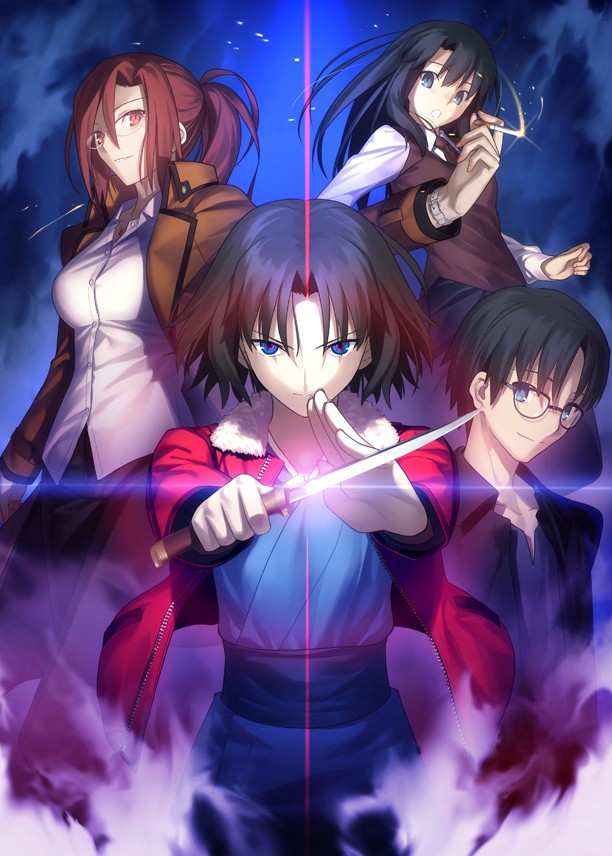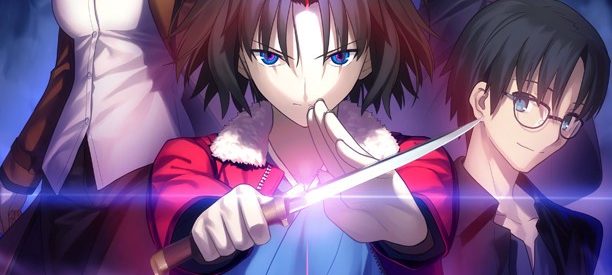Why, of all years, were most of Kara no Ky?kai set in 1998 and 1999? Is it not curious?

Before I start on anything, I should probably tell all of you that this invariably is an over-interpretation of the work itself. I am merely writing down this curious thought which struck me days earlier to get it out of my mind. Can?t help sharing it, you know.
All right, disclaimer over, let me start on the real thing.
The series Kara no Ky?kai (????) is the first published and reasonably successful work by the now famous Kinoko Nasu (?? ???) and Takashi Takeuchi (?? ?). The series itself laid the foundations for the Tsukihime (??) and FATE series by providing and explaining key concepts in the universe shared by the three series (commonly referred as the TYPE-MOON Universe because the firm?s works are so dominated by them). Kara no Ky?kai dealt with the story of Shiki Ry?gi (?? ?) and Mikiya Kokut? (?? ??) and what the couple went through in a fictional Japanese city in the late 1990s. It involves a lot of magic, weird phenomenon and, well, ghosts.
To be honest, the ghosts and the magic part of the story, which is prevalent and the chief attraction of it, do not attract me quite as much as the setting itself. Of course, the reason I was attracted to this series in the first place is more prosaic, the character Azaka Kokut? (?? ??), younger sister to Mikiya, is a likable character to me in that she successfully induced me to have this unquenchable desire to talk to her. I wanted to know more about her when I first heard of this character, and eventually, that curiosity brought me to watch the anime series.
I did not read the light novel series, the original platform Kara no Ky?kai was made public to the world and could have provided me with more information on Azaka because I can?t quite stand the tedium of reading any novels, or indeed any other written works. But that?s another story.
Eventually, however, my curiosity switched from Azaka to the setting itself. Now, mana aside, there is nothing special about the setting. The location the story happened can be at anywhere else because, to my eyes, the fictional Japanese city where Kara no Ky?kai was set is nothing more different than any other small cities in Japan. Even the time it was set was not that special ? Late 1990s Japan, contemporaneous to when the work itself was actually published.
Or so it seemed. Well, at least that was the case for me.
I do believe that Mr. Kinoko (the author) meant nothing more than wanting to avoid interpreting the future, which to be frank can go wrong at almost all levels, by setting the series in a parallel universe contemporaneous of the one he was living at the time. Even that might not be a conscious decision. When I write fiction, I tend to set things in contemporary times, because that is the period in history I am the most familiar with. However, with the benefit of hindsight, I think at the very least the probably-unconscious choice of setting the series in the late 1990s is a very?? Well, curious one.
This came to me when I saw a scene in the spinoff episode Future Gospel: EXTRA CHORUS (????: EXTRA CHORUS) of the TV anime series, and, surprise, surprise, it involved Azaka. The scene went like this; it was late December 1998, and Azaka wanted her older brother Mikiya to be with her to celebrate the coming new year, but Mikiya, already in a cozy relationship with Shiki, refused. Furious, Azaka decided she would celebrate the new year with her classmates instead. The scene I was intrigued depicted her in a railway station talking rather excitedly to her classmates using a public phone available there in the station. I do not hear the exact words Azaka spoke because the production team rather cleverly masked every word she said with the noises of EMUs passing by the station. Even from the other side of the telephone line, I was only told that Azaka was ?fuming? and ?wanted to come back to school?.
What Azaka told her classmates in that conversation is, of course, irrelevant. I am most intrigued, however, by her act of dialing her mates in a railway station using a public phone. That?s what get me. This small act reminded me that I am reading a story from a recent past because, seriously, WHO STILL USES A PUBLIC PHONE THESE DAYS?
Then, this thought loomed in my head: Isn?t it a bit curious that the series of weird, sometimes terrifying stories happened in a Japan in the midst of a great economic depression? 1998 and 1999 were two not particularly spectacular years when it comes to Japan?s economic situation. The Asset Price Bubble had burst some seven years earlier, and the country was probably still reeling from effects of the 1995 K?be Quake. The mood was not good, at least in my interpretation of the Japanese mind.
Setting Kara no Ky?kai in a Japan in which an economic depression is well underway kind of sets the tone of the series too. It is not going to be a happy-go-lucky series, as those who had seen it will know. My point is, maybe, just maybe, what Mr. Kinoko experienced in real life (say, in knowing the Japanese economy is plunging deep into the toilet) helped him set the general tone of his debut novel.
This, of course, is a rubbish point to make, because many a fiction is an exaggerated version of what the author experienced in real life.
But, allow me to remind you that Mikiya, the character, and Mr. Kinoko, the author, are less than five years apart in their births (gained from the fact that Mikiya was 17 in 1995), which means what Mikiya experienced in his fictional life, Mr. Kinoko might have experienced it too, to a lesser magnitude of course. Think about it, Mikiya could not have ended up working for a worse employer than T?ko Aozaki, who constantly neglects to pay Mikiya for his works mind you. In real life, it would mean a meeting at the Japanese equivalent of a labor tribunal.
A Japanese born in the late 1970s to the end of the 1980s is unlucky in that they bore the brunt of the great depression caused by the Asset Price Bubble. They shared nothing of the prosperity their parents enjoyed. All they have are unstable employment and low wages. This really darkens the mood of those aspiring youths. I think, to some extent, without being deliberate, Kara no Ky?kai encapsulates the Japanese mood at the time very well. It expressed, in an alternative way, the general disappointment at the Japanese economy, and probably the entire nation itself, at the time.
There has to be a reason that debt caused the death of one of the girls in the story. She jumped off the top of an abandoned building, allegedly manipulated by ghosts. However, I think this character is symbolic of the hopelessness Japanese youths felt at the time. The economy in the toilet, no prospects of a fulfilling life in the near future, and a lot of peers competing along with you for jobs no longer plentiful. Man, it is a depressing scene, and add to it family problems and debts, it?s the perfect recipe for suicides*.
*Before I continue though, mind you, nothing is solved by suicide. Seek professional help should you need any.
There are other things that I think depicts the economic depression of Japan very well in the series? own way. Why, of all buildings available in the city, did T?ko Aozaki choose one that was abandoned mid-construction as the office of her firm? Why were crimes so prevalent in the city and most of them (at least those depicted in the series) were committed by youths less than 20 years old? Why was the weather depicted in the series almost invariably cloudy or raining?
Magic? Probably not. I cite the general disappointment and hopelessness Japanese youths felt at the time as the main reason for the general doom-and-gloom tone of Kara no Ky?kai. No other works in the TYPE-MOON Universe are as depressing as the pilot that founded it. For me, the universe itself also kind of represented the Japanese economy in the near past in some manner: A gloomy start, gradually graduating to a more hopeful situation. Isn?t that exactly what is going on in Japan now?
So, the conclusion. Without intending to do so (probably), Kara no Ky?kai represented the depressing situation of the Japanese economy in the ?90s by depicting a universe equally depressing in alternative ways. And it was perhaps because the work resonates the feeling of disappointment and hopelessness among Japanese youths at the time that it achieved such success, paving the road for the FATE series, the most famous and successful work TYPE-MOON has produced to date.
But then, I have to stress again, it is possible that the reason most of Kara no Ky?kai?s story was set in 1998 and 1999 can very well be explained with ?IT JUST GODDAMN IS! DON?T ASK!?. This is an over-interpretation of Kara no Ky?kai. I do not think Mr. Kinoko intended anyone to interpret his work in such unlikely ways, but when the story was set did provoke more thoughts on me than any other character or concept in the series, and I deem it a thought curious enough to share to you, dear readers. The context in which the work was written weirdly resonates with the work itself, is it not curious?


